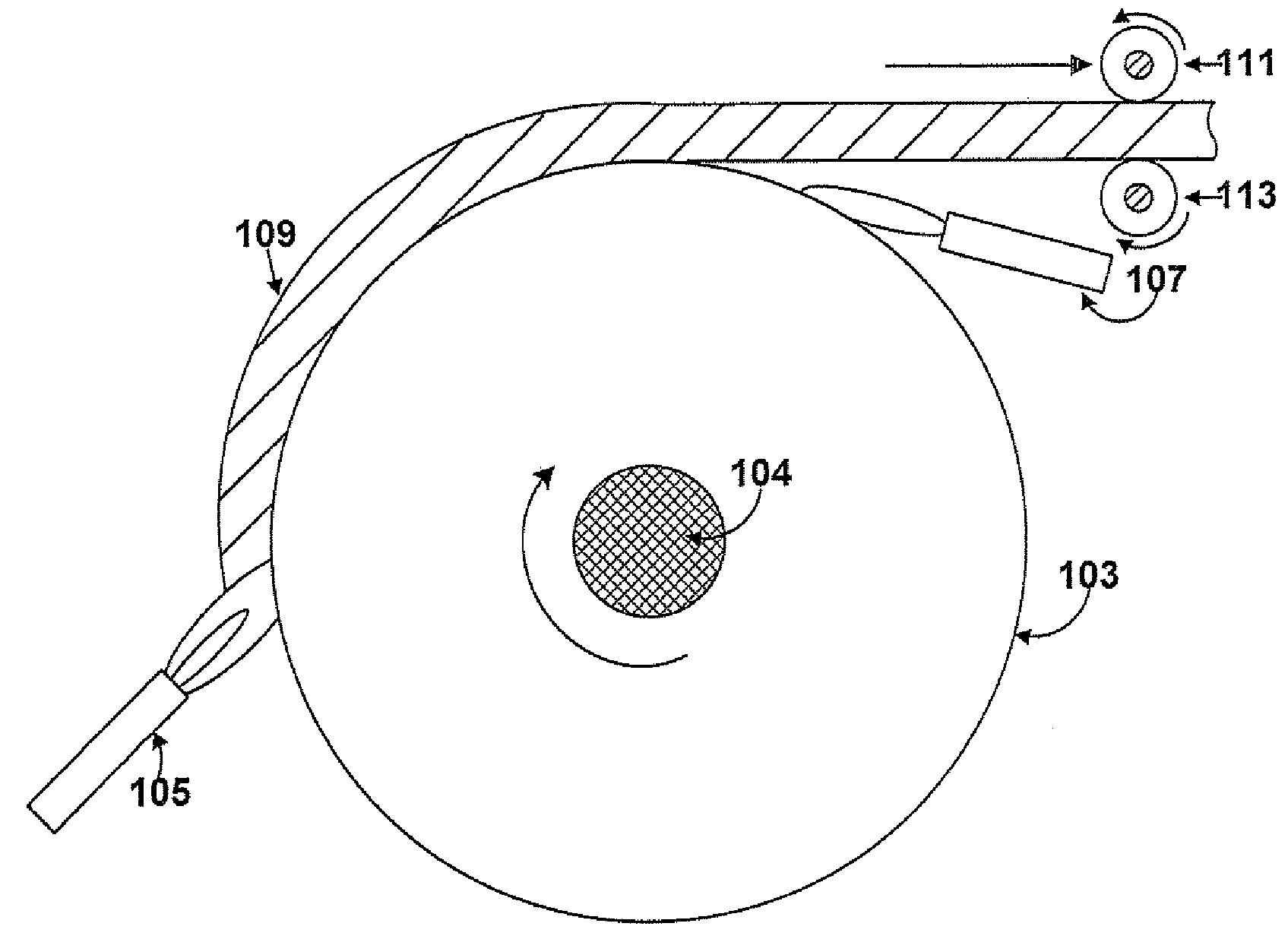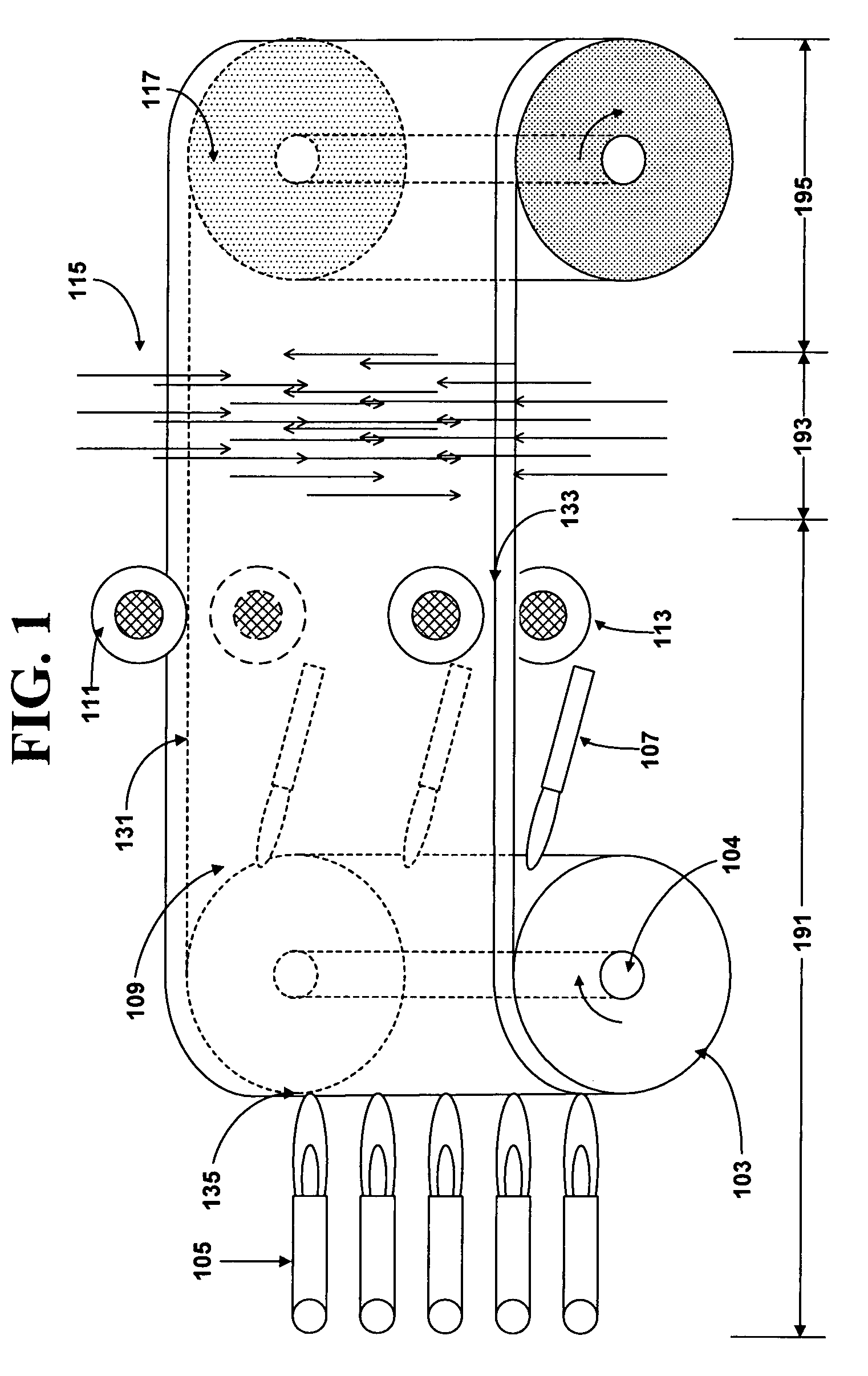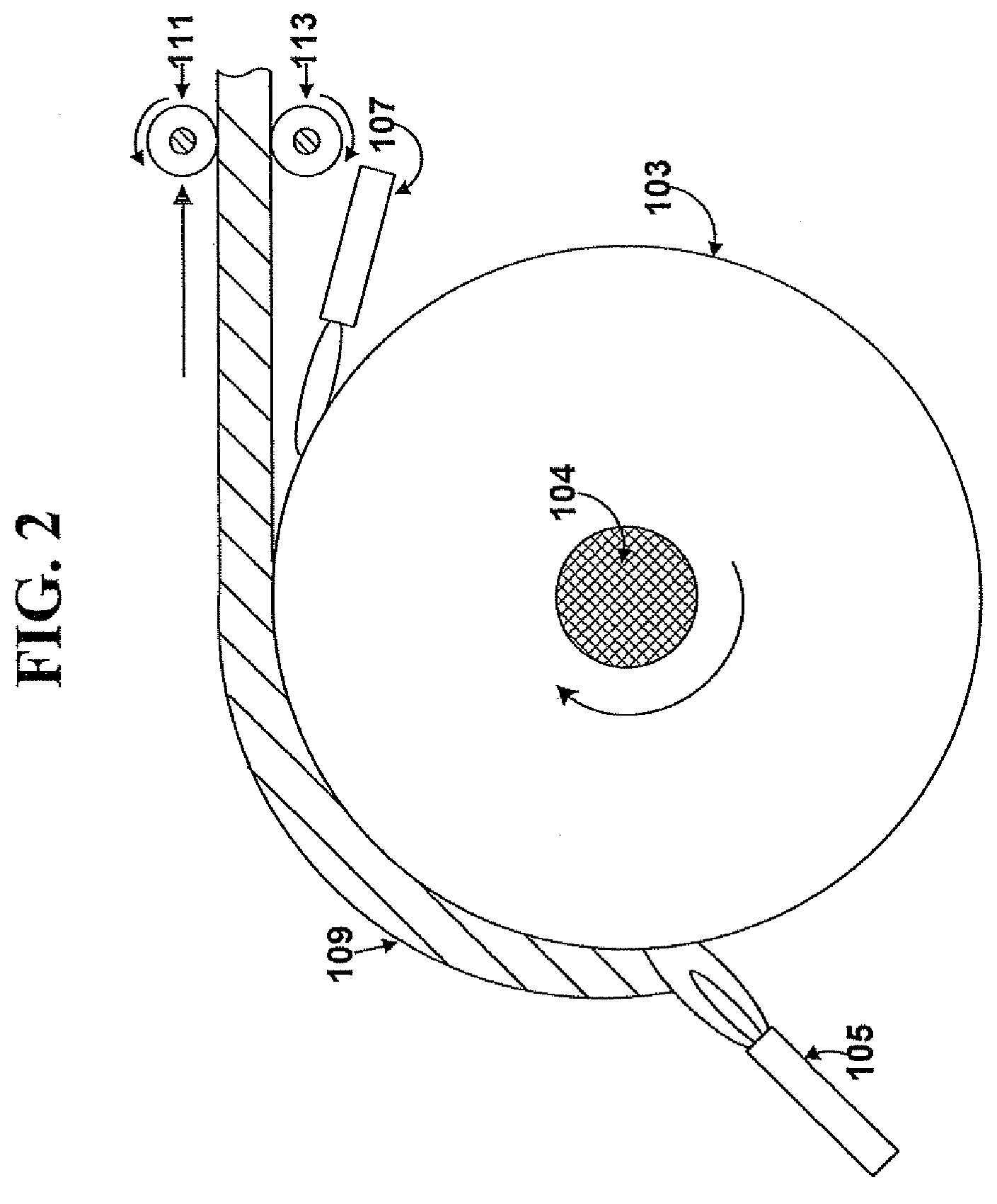Process and apparatus for making glass sheet
a glass sheet and glass sheet technology, applied in glass making apparatus, glass deposition burners, manufacturing tools, etc., can solve the problems of less than pristine surface quality, unwanted contamination of interface, and high cost, and achieve uniform thickness and composition, high surface quality, and high thickness uniformity
- Summary
- Abstract
- Description
- Claims
- Application Information
AI Technical Summary
Benefits of technology
Problems solved by technology
Method used
Image
Examples
example 1
Fabrication of a Single-Layer Soot Sheet
[0150]A layer of at least 99% by weight silica was produced in an apparatus according to the present invention. Five linear burners, each 1 inch wide, were mounted on a burner manifold. These burners were placed in a line, next to each other, to produce a uniform, 5 inch wide soot stream. The gasses flowed through the burners included: approximately 5 grams / minute OMCTS carried by 20 SLPM of N2 carrier gas in the centerline orifices of the burners. These gasses were surrounded along their length on both sides by a row of O2 orifices that provided approximately 5 SLPM of O2. Outside of these gasses were 2 more rows of orifices providing an additional 20 SLPM of O2. The final row of orifices, outside of the two, provided a flame to ignite the OMCTS. The flow rates were 12 SLPM of CH4 and 10 SLPM of O2.
[0151]The burners were positioned approximately 4 inches from the deposition target. The target was a cylindrical quartz drum of 15 inches diamete...
example 2
Sintering of a Single-Layer Soot Sheet
[0152]A soot sheet, as described above in Example 1 but with a thickness of 60 microns was fabricated. Three of the above described burners were used in the burner array. The thickness was decreased by increasing the rotation speed of the drum and lowering the OMCTS flow rates. Thickness, density, and production rate of the soot sheet were changed by adjusting burner flow rates, drum rotation speed and distance from the burners to the drum.
[0153]A sample length, approximately 2 feet long and 3 inches wide, was taken for a sintering experiment. The peripheral edges of the soot sheet were pinned between rollers in contact along the length of the sample. A heat source was provided to sinter the soot sheet. The temperature of the soot reached approximately 1500° C. and the soot sheet densified to clear, sintered glass. The sintered glass was approximately 30 microns thick.
[0154]The sintered sheet with un-sintered peripheral edges was removed from th...
PUM
| Property | Measurement | Unit |
|---|---|---|
| thickness | aaaaa | aaaaa |
| thickness | aaaaa | aaaaa |
| thickness | aaaaa | aaaaa |
Abstract
Description
Claims
Application Information
 Login to View More
Login to View More - R&D
- Intellectual Property
- Life Sciences
- Materials
- Tech Scout
- Unparalleled Data Quality
- Higher Quality Content
- 60% Fewer Hallucinations
Browse by: Latest US Patents, China's latest patents, Technical Efficacy Thesaurus, Application Domain, Technology Topic, Popular Technical Reports.
© 2025 PatSnap. All rights reserved.Legal|Privacy policy|Modern Slavery Act Transparency Statement|Sitemap|About US| Contact US: help@patsnap.com



